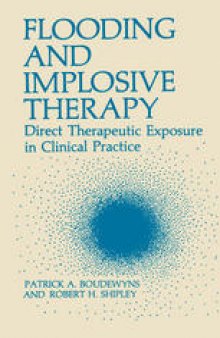 جزییات کتاب
جزییات کتاب
Behavior therapists often "desensitize" clients by exposing them to an anxiety-eliciting stimulus such as a phobic object. The premise is that repeated exposures will eventually reduce or extinguish the fear. This process is called therapeutic exposure. Many therapists would agree that therapeutic exposure is an effective treatment for several anxiety disorders. However, the "directness" with which therapeutic exposure should be encouraged for a client is much debated. Many feel that direct therapeutic exposure, more commonly known as flooding or implosive therapy, causes clients an excessive amount of anxiety, and may therefore produce long-lasting and harmful side effects. In response to these concerns, one well-known behavior therapy technique, systematic desensitization, was designed to expose clients to imagined fear stimuli slowly and under relaxing conditions so as not to elicit anxiety. In the first chapter of this book, we show that these concerns are based on false assumptions. When used properly, direct therapeutic exposure is not harmful. In Chapters 2 and 3, we review the literature on the process and outcome of flooding and implosive therapy from a practical, clinical perspective. This literature shows that these treatments are effective and efficient for certain psychiatric disorders. In Chapter 4, we describe the treatments we offer our clients and show how learning theory can be used to help develop the procedure and content of therapy. Chapter 5 provides case examples with transcripts of typical therapy sessions. This book can be used as a handbook for therapists or students.



 دانلود کتاب
دانلود کتاب

 جزییات کتاب
جزییات کتاب





 این کتاب رو مطالعه کردید؟ نظر شما چیست؟
این کتاب رو مطالعه کردید؟ نظر شما چیست؟
